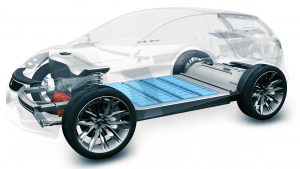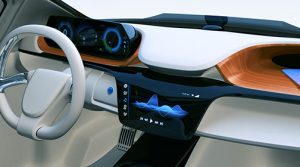From a design perspective, today’s innovators are disrupting the traditional start-to-finish automobile design process and methods by relying on cloud hosted, platform tools to take a new, electric, connected, autonomous vehicles from concept, to design to manufacturing in record speeds with reduced cycle time and costs. Advancing from previous tools and processes and creating within a connected, collaborative environment, multiple concepts with a variety of variations can be easily and quickly visualized and simulated. Even the most complex, electronic systems can now be validated and quality checked in real-time during the design process and engineering processes.

We all know that vehicles can experience unpredictable environmental conditions, forcing autonomous vehicle embedded systems to potentially face serious challenges at any moment. This means a level of testing during the design process must be very high. Industry innovators working on collaborative cloud / on-site platforms are able to simulate, debug and validate the multiple requirements first and then automatically test the actual system against its functional specification, using a large number of tests generated automatically.
It’s often said that today’s vehicles have become more computer than automobile. We can only expect cars of the future to continue the trend of vehicles becoming more complex with the rise of autonomous technologies that end users will expect to be connected, intelligent and last but not least: safe. In order to overcome these design challenges, new car designers rely on innovative applications accessible through a centralized platform that allow global design and engineering teams to come together, collaborate end-to-end with digital continuity so that all aspects of vehicle development alongside with systems engineering can happen in real-time, regardless of geo-location. This allows teams to maintain accuracy across all disciplines, easily manage multiple model-based systems engineering tools, account for the physics that are happening, improve upon requirements-driven configurations, reduce overall costs and in the end, rise above the competition.

With these modern tools in their tool box, new and veteran innovators alike can jump on the opportunity to take risks and create uniquely different value propositions for the market with their electric, connected, autonomous vehicle designs. Additionally, the flexibility allowed through platform-based tools on the cloud offers the ability to confirm a sustainable design potentially within a very short timeline, we can now expect a whole variety of designs meeting changing customer demands and expectations within a reasonable time-frame. Innovation involving future subsystems comprising powertrain design – battery, electric drives and power electronics – will only be limited by the design team’s imagination.
The desire to bring autonomous and connected vehicles to the market is really going to accelerate these trends in development and design given that newer customers with purchasing – and importantly – leasing / sharing economic power who are accustomed to quick turns of new and updated apps, will expect the same for vehicles. Similar to their mobile devices, new customers will want their driving and riding experience to be engaging, immersive and interactive. Those companies that bring the entire value chain to together through a virtual platform with the right tools available to focus on this end goal of an incredible user experience will be those that excel and succeed in the future.
Captured your curiosity? Then check out this related blog posts and link to the upcoming October, 2019 Autonomous Vehicle Tech Expo in Novi, Michigan:
- How WIll Self Driving Cars Shape The Future of Mobility? (blog)
- Accelerating Innovation for Autonomous Vehicles: AV Tech Expo Preview (blog)
- Autonomous Vehicle Technology Expo (website)
- Expo Speakers (speaker synopses)
